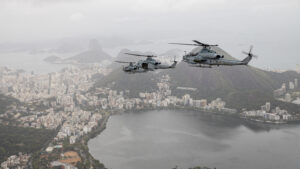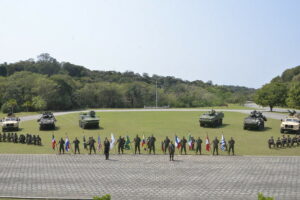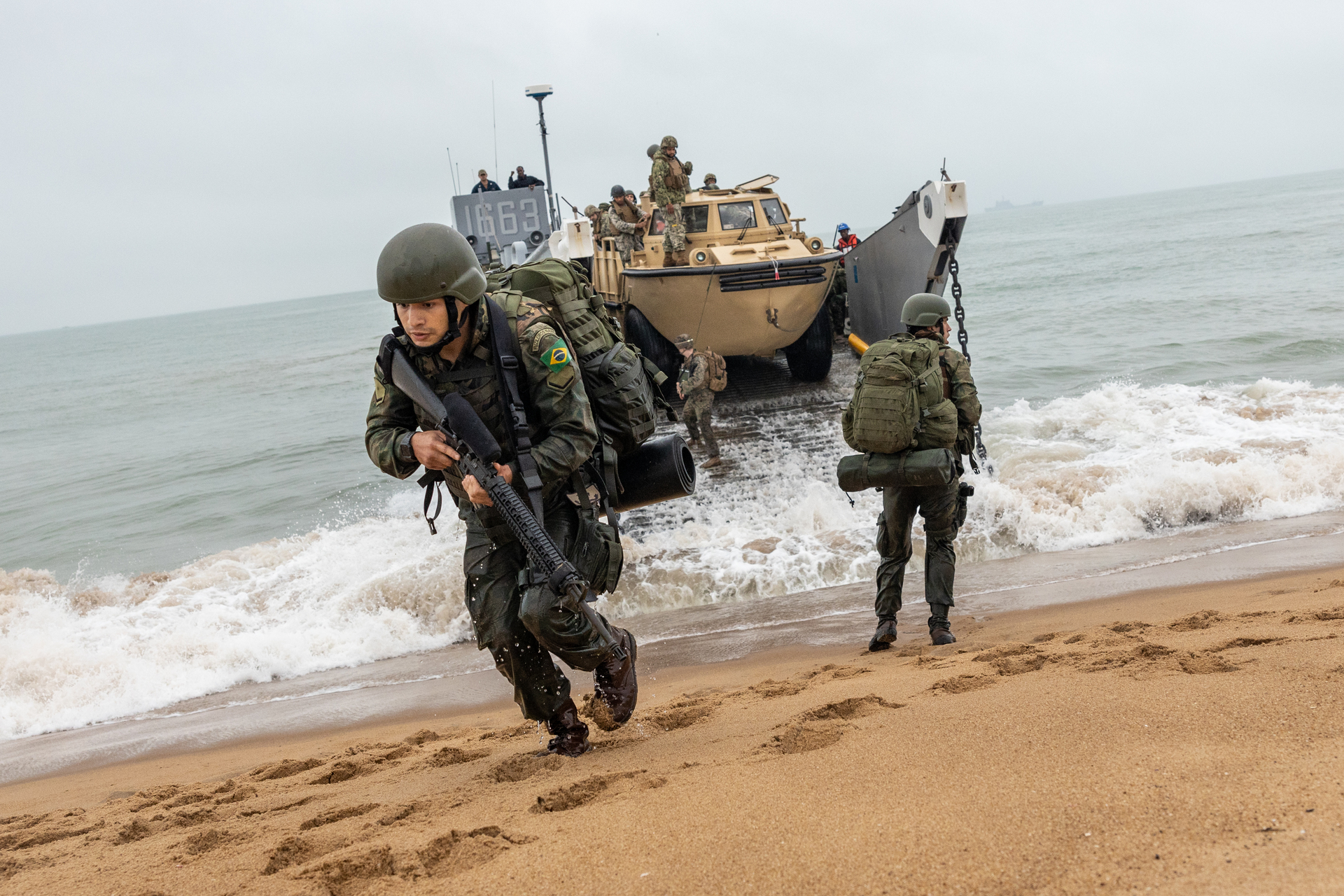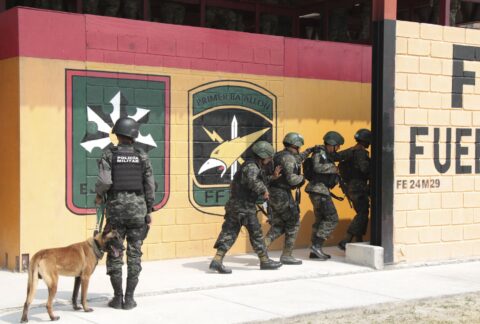Brazil hosted the 63rd edition of exercise UNITAS, gathering 20 countries, September 8-22. The U.S. Southern Command-sponsored naval exercise carried out annually in different countries of the Americas, in a rotational system, is considered the oldest in continuity worldwide, since 1959. The exercise aims to strengthen the mutual bonds of friendship and cooperation among participating navies and marines, improving the capabilities of naval forces to achieve common objectives, conduct joint maritime operations, and develop greater interoperability among those involved.

Maritime exercises were conducted between the southern coasts of Rio de Janeiro and Espírito Santo, in the southeast region of Brazil. In addition to Brazil and the United States, Belize, Cameroon, Colombia, Chile, Dominican Republic, Ecuador, France, Guyana, Jamaica, Mexico, Namibia, Panama, Paraguay, Peru, South Korea, Spain, United Kingdom, and Uruguay also participated in this year’s edition. In all, UNITAS brought together 5,500 military personnel, 12 Brazilian and eight foreign ships, plus 21 airplanes and helicopters. For the first time, African ships crossed the Atlantic to participate in the exercise.
Among the modern equipment brought by the U.S. Navy were the Bell AH-1Z Viper and Bell UH-1Y Venom helicopters, both aboard the destroyer USS Lassen (DDG 82), and a Boeing P-8 Poseidon maritime patrol and reconnaissance aircraft. The U.S. fleet also included the amphibious transport dock ship USS Mesa Verde (LPD 19) and the Los Angeles-class nuclear-powered submarine USS Albany (SSN 753).
“This nation is currently witnessing the coming together of various navies and coast guards from different regions of the world. Today, more than ever, we can experience this comforting feeling of friendship and union that makes me have renewed faith in the potential of our navies as instruments to promote cooperation among nations, for the sake of peace, security, and prosperity of all,” Admiral Almir Garnier Santos, commander of the Brazilian Navy, said as the exercise kicked off.

UNITAS consists of two phases, port and maritime. The port phase took place right after the multinational forces arrived in Brazil and included cultural exchange activities, sporting events, and community projects with civilians. The second phase, which started on September 10, was divided into three more stages: naval operations training, maritime safety, and search and rescue. During the preparation phase participants trained in surface, anti-submarine, and anti-aircraft exercises, as well as electronic warfare and maritime interdiction operations. In the second phase, navies conducted exercises specifically related to maritime security; while the final amphibious phase included a simulation of civilian rescue, through an amphibious incursion on Itaóca beach, in Espírito Santo.
“Today [September 16], more than 1,000 military personnel from the Brazilian Navy and from 11 other countries landed ashore. Previously, special operations teams, members of the Multinational Combined Special Operations Force, under the command of the Naval Special Operations Command [CoNavOpEsp], were left at strategic points. This Force had 158 special operators among Marines and combat divers from Brazil, Ecuador, the United States, Paraguay, Peru, and Uruguay, who conducted support operations in order to allow the landing of the Strike Force,” said Major General Claudio Eduardo Silva Dias, commander of Naval Special Operations.
“Since 2008, UNITAS has been held with an amphibious phase. This inclusion shows the importance that the Brazilian Navy attaches to preparing its forces to carry out humanitarian aid operations and disaster relief. One of the important contributions of this type of training is the learning experience we had in the humanitarian aid to Haiti,” Brazilian Navy Rear Admiral Marcelo Menezes Cardoso, 1st Fleet Division commander who served as UNITAS commander, said.
For U.S. Secretary of the Navy Carlos Del Toro, the two weeks of intense exercises included complex operations on the high seas, which tested capabilities for joint international action and required coordination in all areas.
“Success in this type of mission requires constant communication, multilateral cooperation, and most importantly: trust — trust in the capabilities and decisions of our navies and our nations,” the secretary said.









